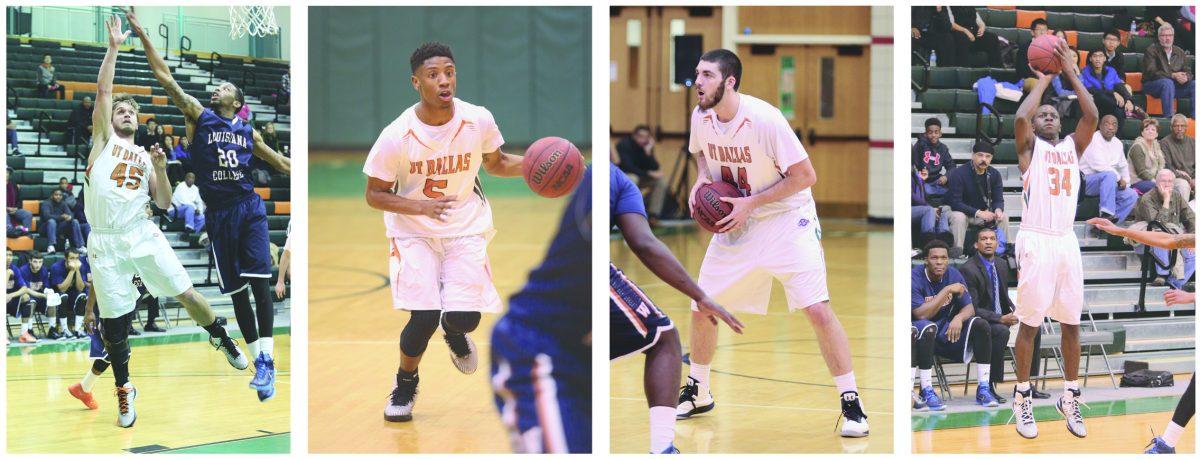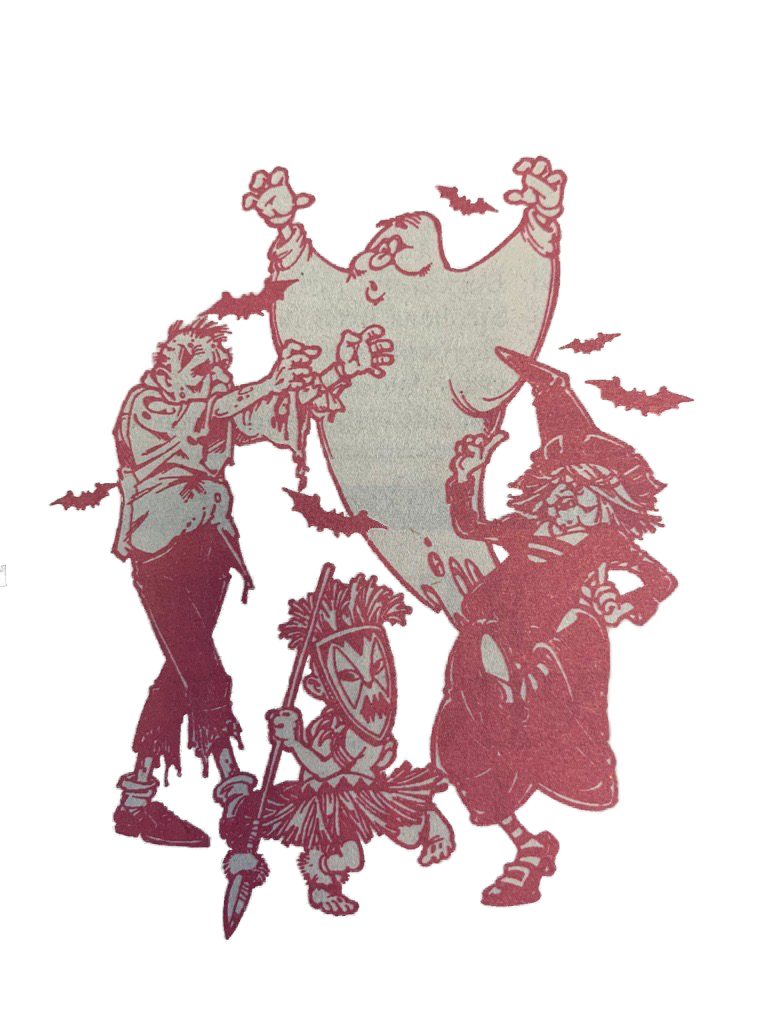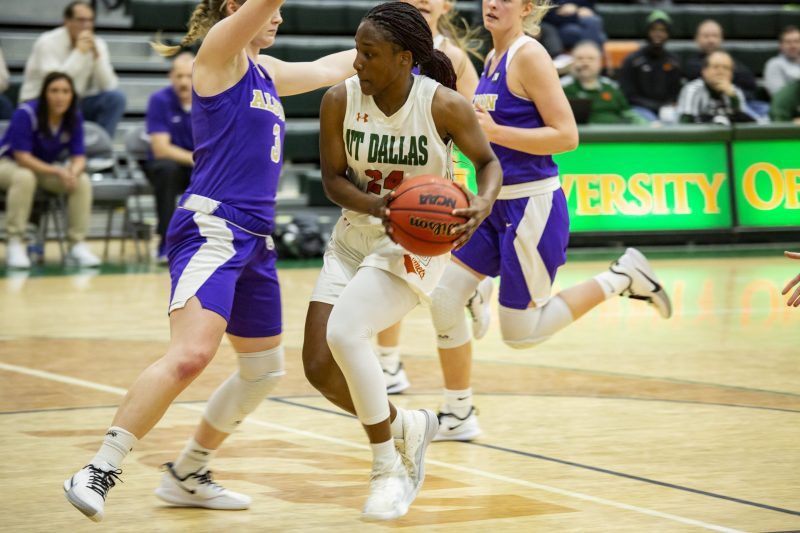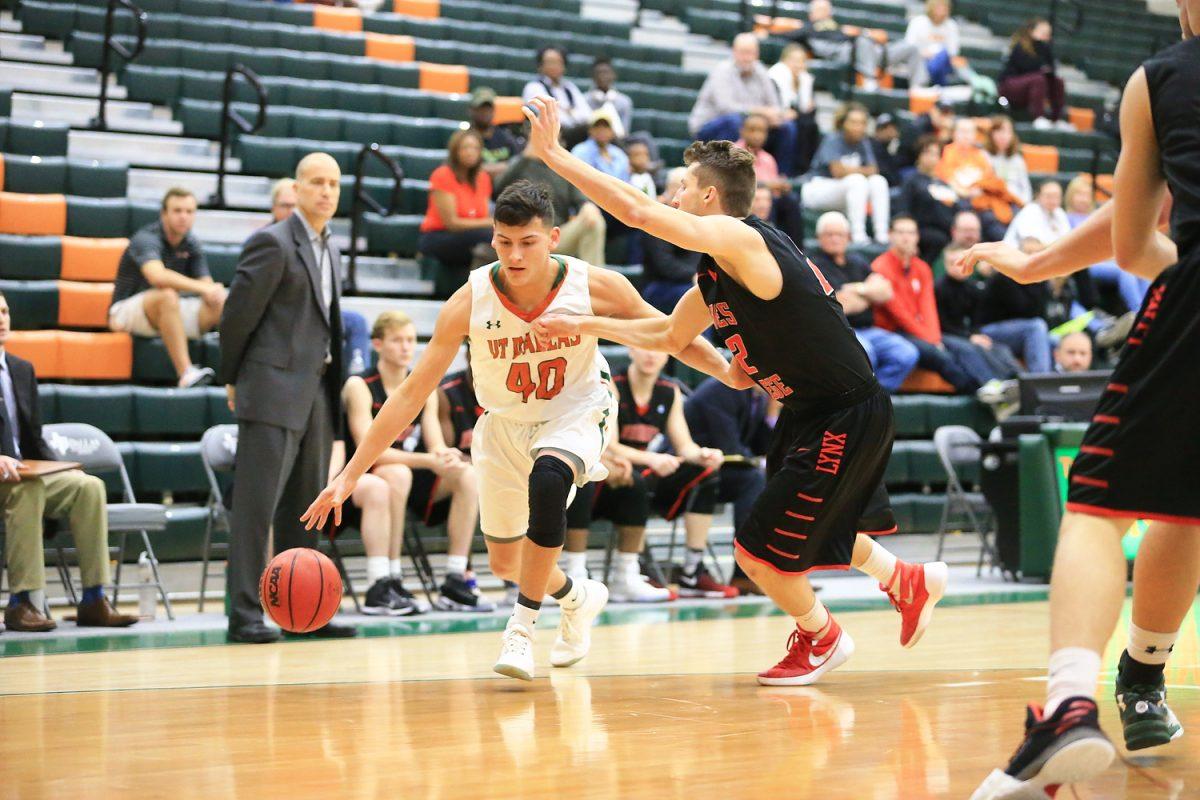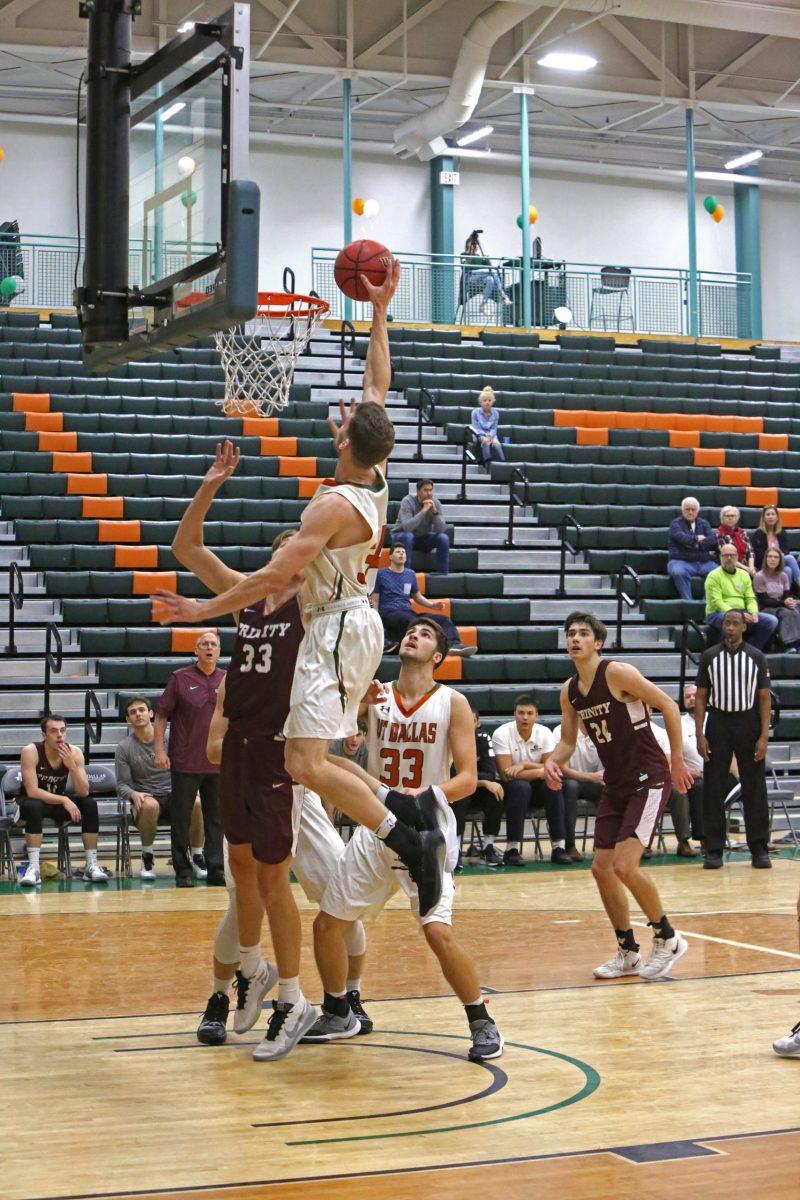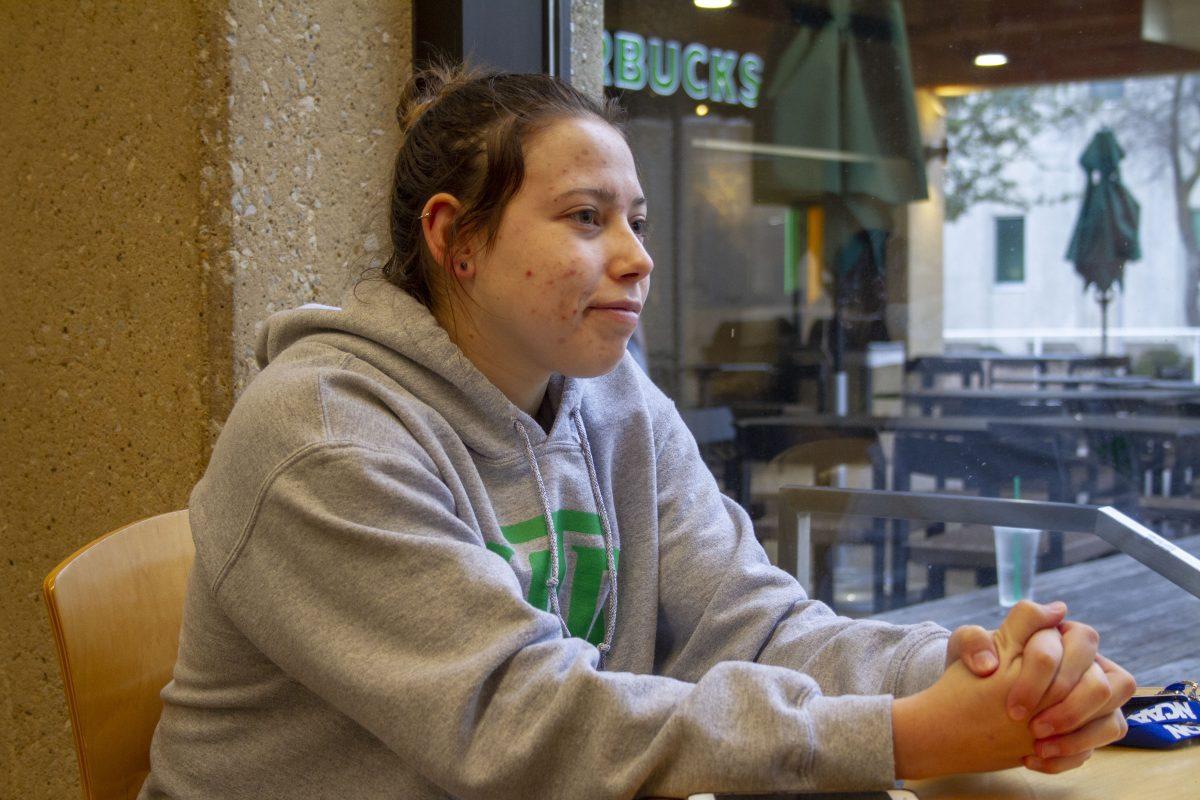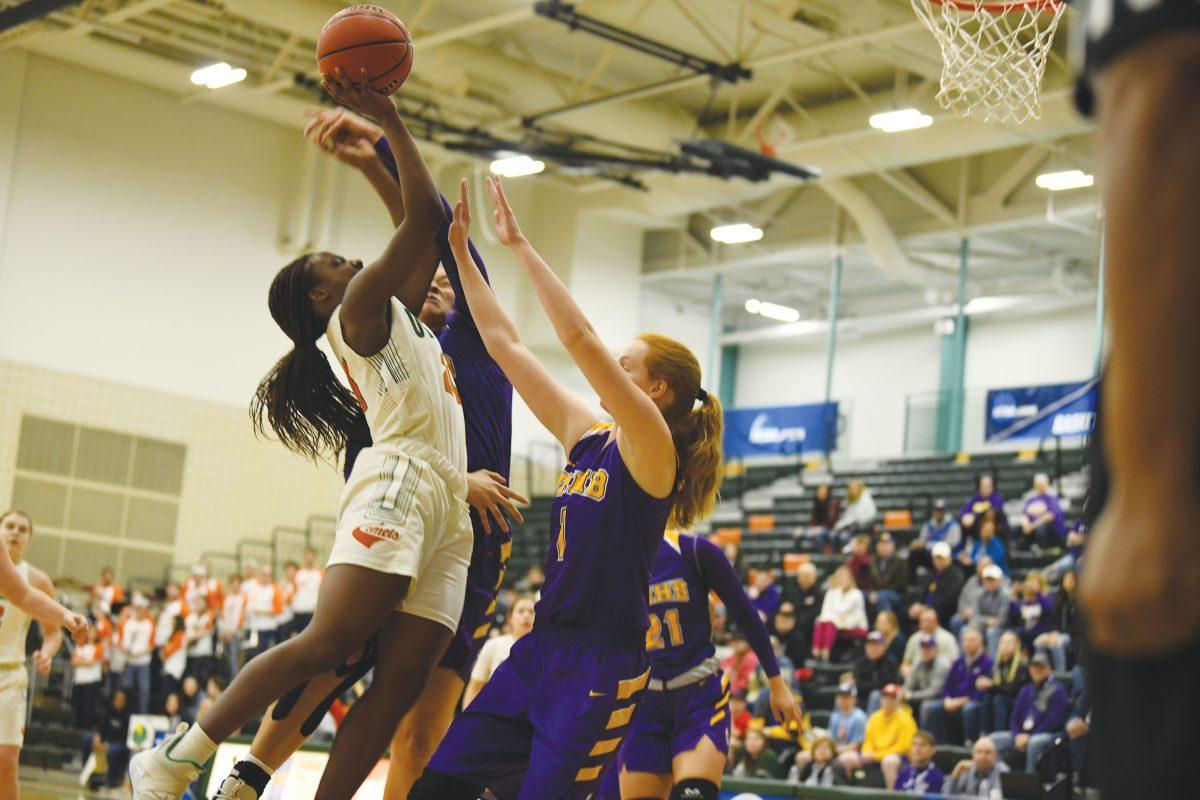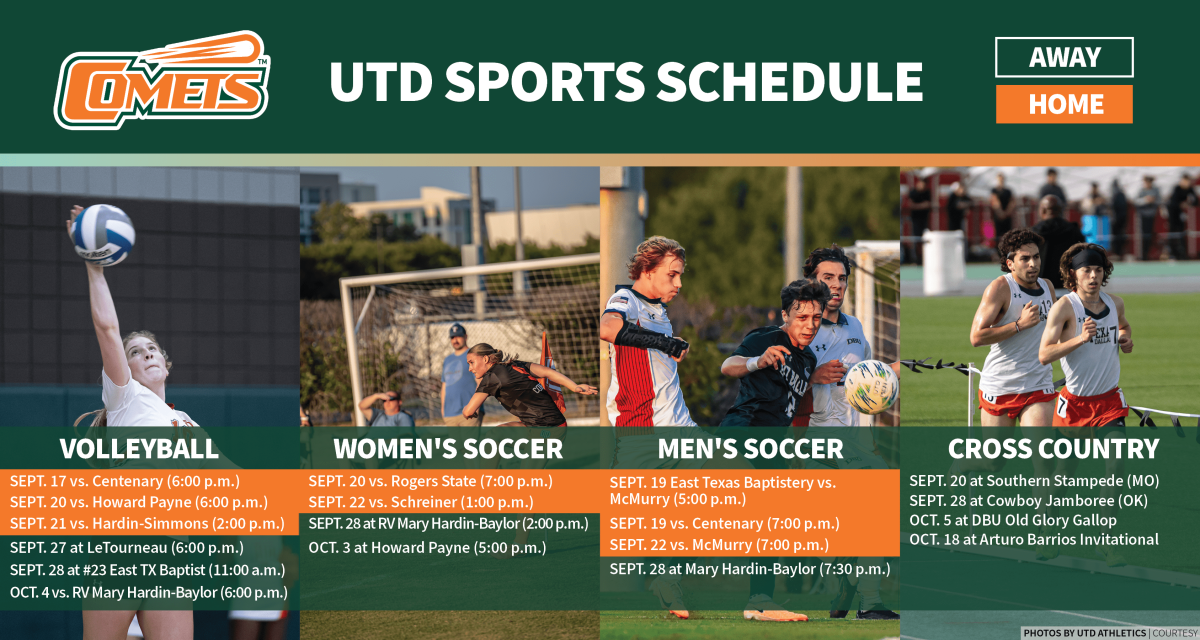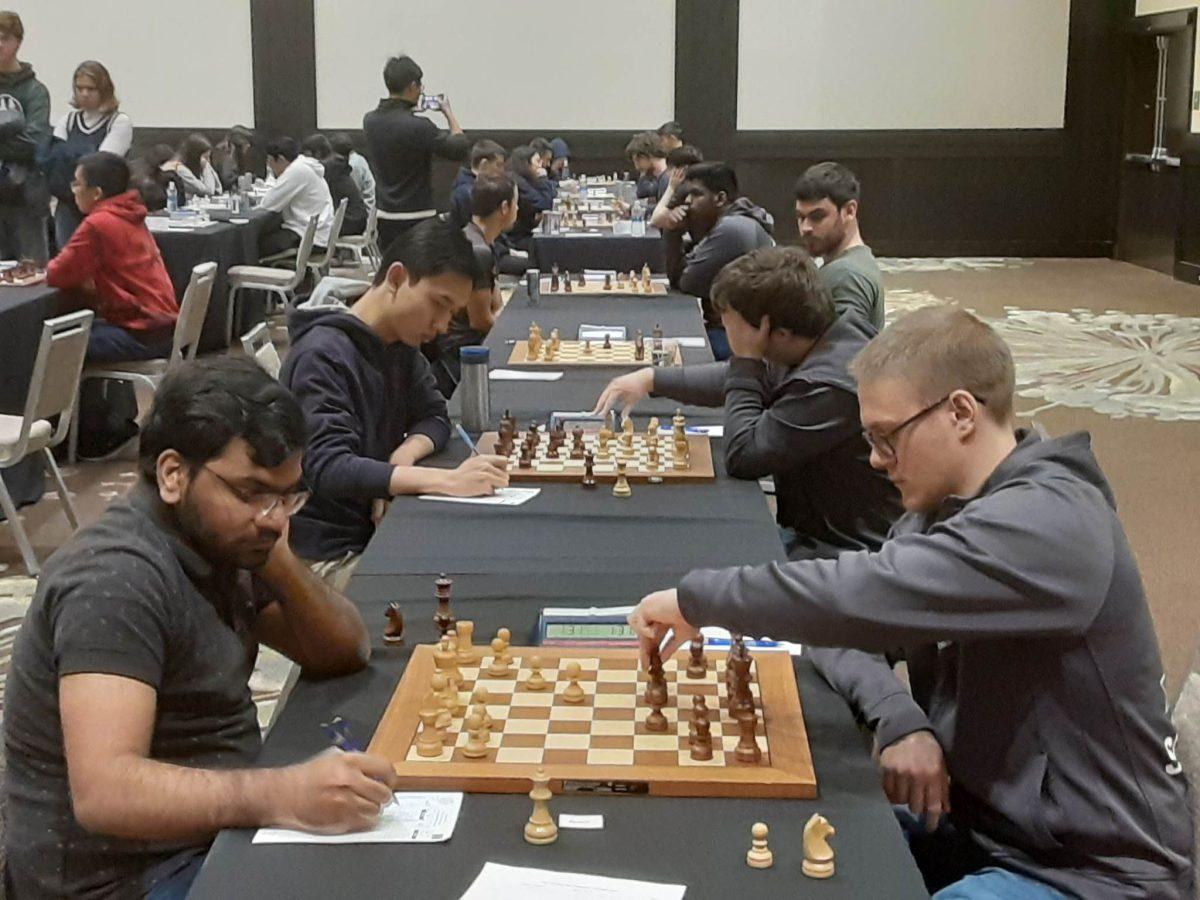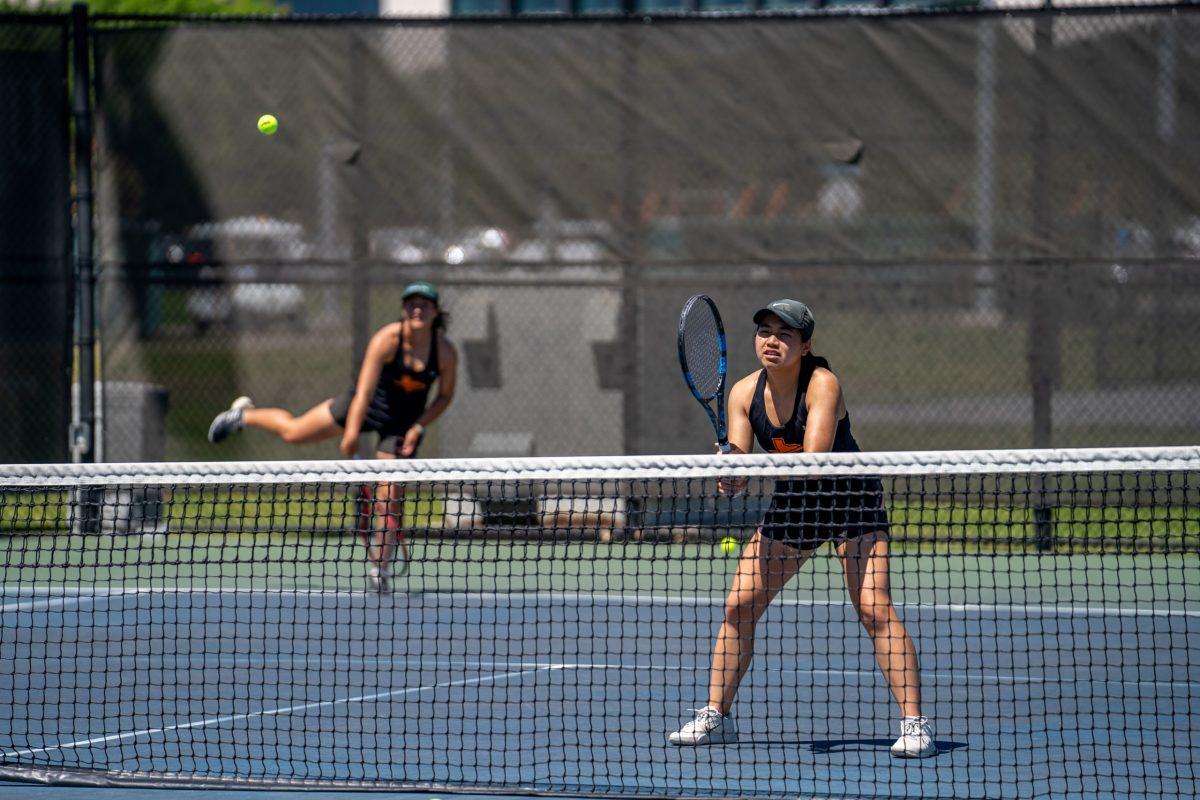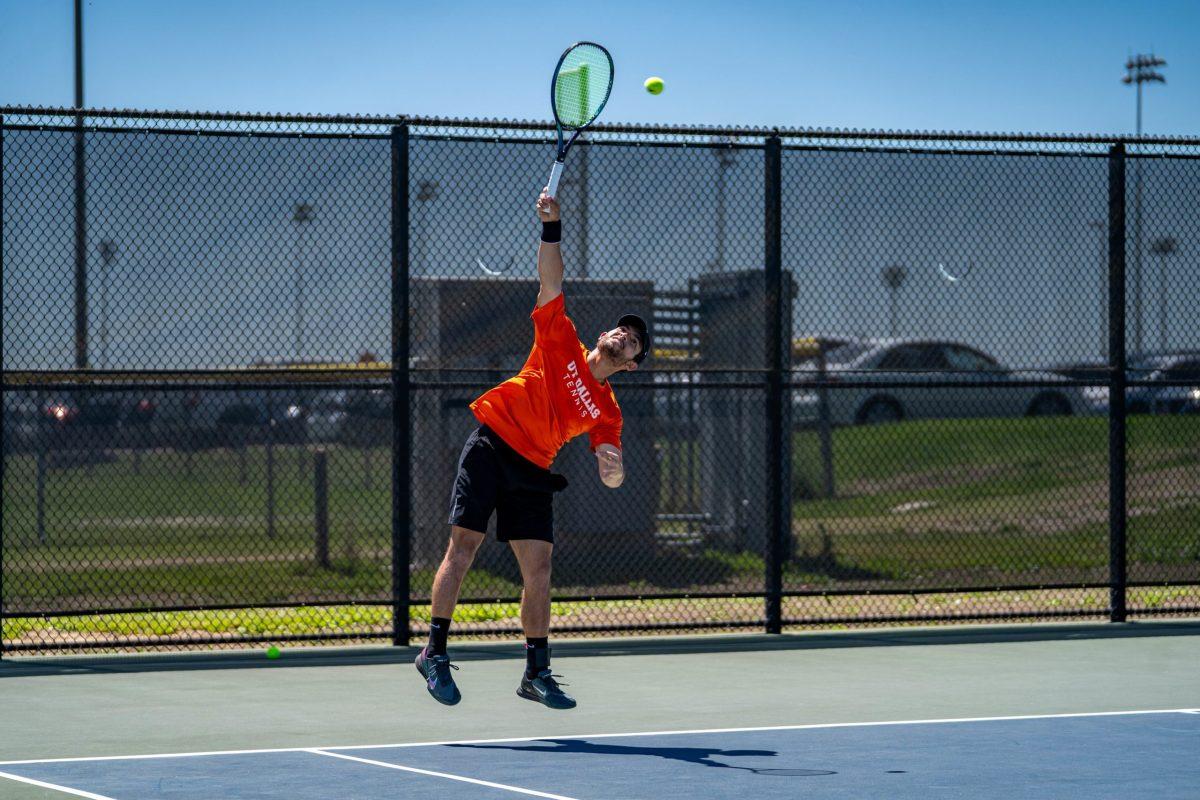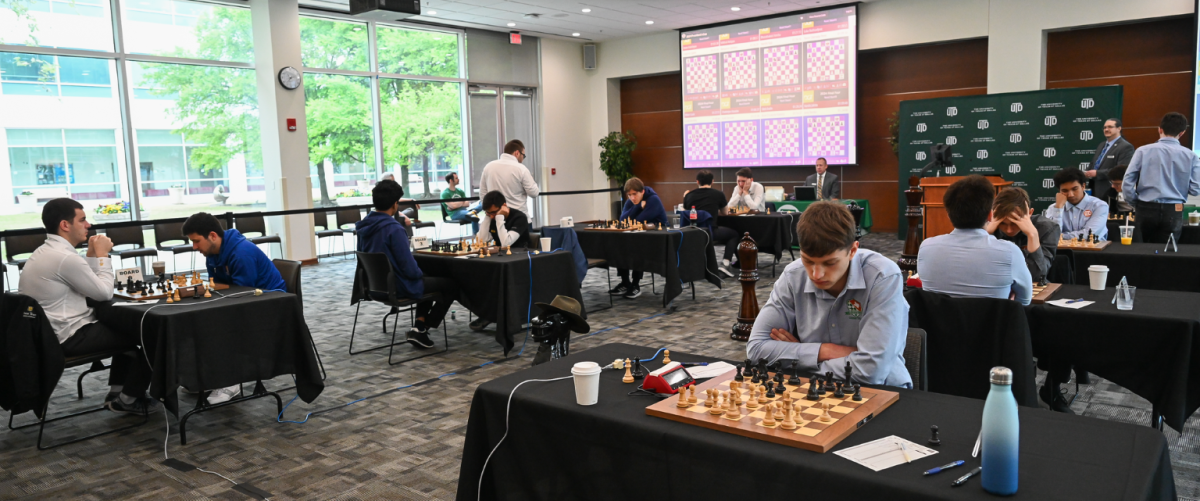Four brand new players start for the men’s basketball team, face challenges of adjusting to new environment
The 2013-14 season was one of the most successful in the history of the men’s basketball program. Led by five seniors, the team went 27-4, including a 20-2 conference record, en route to a trip to the Sweet Sixteen.
This year, the Comets have had to face the loss of that talent. Four brand new players have taken starting positions on the roster despite having no previous playing time at UTD.
The freshmen
Freshmen Caleb Banks and Reagan Keogh have taken starting spots straight out of high school. Keogh, who earned first team All-State honors as a senior at Antonian Prep in San Antonio, has been starting all season for the Comets.
The 6-foot-6-inch, 220-pound forward committed to the team in October of his senior year of high school.
During that year, he tore his ACL, leaving him at a disadvantage heading into his college career. Along with that, Keogh had to adjust to the speed and intensity of the game at the next level.
“The college game is a lot faster. It’s a lot more physical,” he said. “It’s no longer you’re the best person on the court. Everybody is coming from being the best player on their high school (team).”
Still, Keogh knew early on that he had a chance to play. An offseason injury to sophomore center Ryan Horton meant that there was an open spot for a big man in the frontcourt.
Along with that, the drop off in talent from the previous year made it necessary for young players to step up. Keogh said head coach Terry Butterfield told him the team needed help in the post.
“When (Butterfield) first started recruiting me, he said, ‘Hey, look, we’re graduating five guys. Three of them are post men,’” he said. “He never guaranteed me anything. He didn’t say, ‘You’re getting any playing time.’ I kind of set a goal for myself early on that I wanted to start. Once I realized that was a possibility, it just pushed me even harder to go and get that done.”
Keogh is currently averaging 6.1 points a game, along with 5.7 rebounds, the third highest on the team. He said his role on the team is to play defense and get boards.
Banks’ path to a starting position was much different. Unlike Keogh, he came in at a late point in the recruiting process.
“Caleb was a very last minute addition,” Butterfield said. “I didn’t even meet with him, I was out of town but Caleb came over on a whirlwind visit and decided to come at the last minute.”
Banks, who led North Crowley High School in Forth Worth to a district title his senior year, spent much of the year filling in for senior guard Nolan Harvey. He came in when Harvey needed time to rest on the bench.
That all changed when Harvey went down with a broken hand that brought his season to an early close.
Banks, who is the smallest member of the team at 5 feet, 7 inches and 145 pounds, had to step up to take the role of the sidelined team captain.
“When I found out (Harvey) was out for the whole season, I had to change my whole mindset,” he said. “I had to take over the reins of the starting point guard. Now, I have to make sure that we get done what we need to get done.”
Banks is currently averaging 3.5 points a game and dishes out 2.4 assists per game.
When it became obvious that Harvey was done for the season, Butterfield said Banks knew the responsibility placed upon him.
“Obviously that changed the whole dynamic of our team,” Butterfield said. “We went from a seasoned, senior veteran to a freshman that was still feeling his way. And I must say, to his credit, he’s handling it very well, considering his newness to the program.”
The Transfers
For the other new starters on the team, a longer route was taken to get to UTD.
Sophomore forward Kyle Coulter played basketball, baseball and football while at Travis High School in Richmond. He was named a first team all-district quarterback and had several offers from Division I teams to play on the gridiron.
His father, who played football at Rice University, encouraged him to continue playing football, but Coulter had always enjoyed playing basketball more. As a senior, he was named second-team all-district and was a Houston Area Basketball Coaches Association All-Star.
That love game, along with several concussions he suffered playing football, encouraged him to attend Concordia University his freshman year of college to play basketball.
After his first year there, however, he transferred to West Texas A&M to take another crack at football.
The team’s propensity to throw the ball and how it developed passers attracted Coulter. However, once he started to play, he realized how much he missed the basketball court.
“In college, you have to love the sport to play it,” Coulter said. “I didn’t feel that passion about football as I do basketball.”
Once he knew football wouldn’t work out, he decided to start to look for schools that he could transfer to play basketball at. UTD’s system and recent streak of success, along with the school’s close proximity to members of his family, convinced him to apply and attempt to join the basketball team as a walk-on.
After having a year off from basketball, Coulter had a lot of ground to cover to make it on the squad. Even though he had a resume of college playing time, there was no guarantee Coulter would even be given a roster spot.
“Our message to him was, ‘Kyle, if you want to come and give it a go, we’re more than glad to have you come do that,’” Butterfield said. “‘But we want you to be aware that if we don’t think you’re going to meet our standard, if you’re not good enough, we’re not guaranteeing you anything.’”
Coulter’s first day to prove himself was the first day of practice for the team, leaving him with little time to catch up, but it didn’t take long for him to earn his spot.
He has started every game of the season for the Comets. The forward is the third highest scorer on the team, averaging 10.7 points per game. He also has the third most three-pointers on the team with 35 shots from beyond the arc this season.
Senior guard Rafael Farley also had stints at two colleges before stopping in Richardson. Recruited by UTD out of Klein Forest High School in Houston, he opted instead to play his first two years at Ranger College, where he averaged 17 points as a sophomore.
After his days at Ranger were over, Farley transferred to Abilene Christian University, a Division I school. While he was able to play against some of the best competition in the country, he also saw the more serious side of the game.
“I lost a lot of the love for (basketball) because it became more of a job than just a game I loved to play,” he said.
While at ACU, Farley averaged 4.6 points a game. After the season was over, Brian Burton, a former UTD player who was an assistant coach for the Wildcats, encouraged Farley to take advantage of his last year of eligibility and transfer to UTD.
Since his transfer, Farley has had one of the most prolific scoring seasons in program history. He currently leads the conference in points scored and tied the school’s record of the most points in a single game when he dropped 40 against The University of Mary Hardin-Baylor on Jan. 17.
He averages 21.2 points a game, the second most in the conference, and leads the team and the conference in three-pointers made.
Having a transfer senior, especially one who scores like Farley, is something that is not commonplace for Butterfield.
“(Farley) is the first Division I transfer that I can recollect, and he’s the first one-year player we’ve ever had,” he said. “There are some schools that make a living on one- and two-year players, but we’re not one of them, so it’s a highly unusual situation.”
Butterfield said Farley has been able to adapt to the system because of the high level of skill he has. His ability to create his own shot has been one of his biggest strengths.
Even though the competition at the Division I level is more athletic, Farley said the skill level is still high in Division III. The experiences he had at different schools and facing such a wide array of competition also helped him hone his game.
“I feel like experiencing all those different aspects, all those different schools and different players, I think it kind of trained me for my last year,” he said.
Growing Pains
The most difficult part of having so many new players is getting every player on the same page, Butterfield said.
“Adapting to a new coach with a new style, I think that that’s a huge issue,” he said. “I think adapting to a new team with a new culture, new personalities, new friendships, new relationships; I think it can be very challenging for a new player.”
Even though the team has had struggles with the learning curve, losing back-to-back games for the first time since 2012, it is still in a position to make a run in the conference tournament.
Butterfield said this time of the year is one of the most critical moments as the team jockeys for position in the league.
Even though the team lacks the veteran leadership it had in the past and has yet to find a consistent groove, there is still a sense from the players that when everyone is communicating effectively, the team is hard to beat.
“We struggled with some teams that are .500, but we can beat the best teams,” Farley said. “We don’t have a great chemistry, but when we are clicking, we can be one of the best.”

